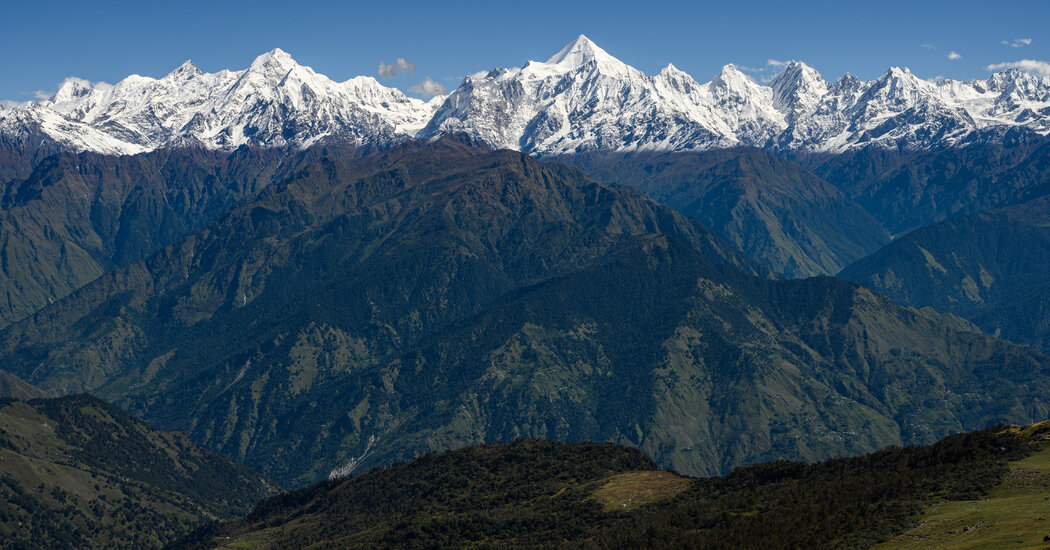In a high hamlet, a two-hour trek up a verdant slope beneath ice-clad Himalayan peaks, an argument erupted over a folk tale. Two brothers, Pralad Singh Dariyal, 60, and Hira Singh Dariyal, 77, heatedly debated which nearby village in the Johar Valley was once the home of the story’s heroine. Eventually agreeing on a few possible locations, Hira said that the story, which is sung as a ballad and which he remembered from childhood, was virtually unknown today among the area’s young people. “They’re the YouTube generation,” he explained with a shrug.
“No one even knows how to sing it anymore,” Pralad added.
The voice of Pralad’s wife, Sundari Devi, rang out from the kitchen into the courtyard, where I sat with the brothers and a couple of other people in front of clothing drying on a line and pieces of a butchered sheep drying on a neighbor’s stone-shingled roof. “You don’t know what you’re talking about,” she shouted. “Some people do remember how to sing it. Just because it’s old doesn’t mean it’s not important.”
In the Kumaon region of the Indian state of Uttarakhand, where sky-scraping summits soar over a maze of sublime hills in a corner of the country that abuts Nepal and Tibet, the story known as “Rajula Malushahi” has been passed down orally for hundreds of years. A sprawling epic of adventure and true love that unfurls across a broad swath of the landscape, it’s long been recognized as Kumaon’s pre-eminent folk tale. Short versions were sung by parents to their children, while renditions lasting up to 10 hours were performed by hurkiyas, or traditional bards, who chanted and drummed alongside a handful of backup vocalists for local audiences, often as a way to pass cold winter nights, before televisions — and now smartphones — became ubiquitous.
When I first learned about “Rajula Malushahi” on a previous visit to Kumaon, I was immediately intrigued. After reading as much of the literature about it as I could find, I decided on a recent trip to use it as a guide to traveling through the area, letting it take me places I might not otherwise think to go.
While creating an itinerary, I realized that there was no definitive route to follow, since there is no definitive narrative. Before it was first written down in the 1930s, numerous versions were sung. Though they tend to share the same overarching plotline, there are many variations among them, including where certain episodes are said to have occurred….
Click Here to Read the Full Original Article at NYT > Travel…
